Toxic masculinity has been prevalent in many cultures from time immemorial. Many different cultures groom young men and boys to act aggressively and embed values of control and dominance in them. In fact, when these boys display the smallest/slightest signs of emotional vulnerability, they are told to stop “crying like girls” and to not show any signs of weakness. Time after time, they are told to maintain control of every situation. This leads many men to remain frigid, cold and unresponsive under various circumstances. Further, it prevents them from sharing their emotions and thoughts with their family members and friends. Not only does this contribute to mental health issues later on in their lives, but it also reinforces the idea of needing to remain in control of their feelings.
These patriarchal stereotypes force men to act tough and any signs of vulnerabilities are stigmatized. One of the longer-term consequences of these stigmas include the prevention of male sexual assault survivors from coming forward and discussing their experiences. They may be afraid to do so as it leads to the assumption by society that they are weak and to blame. These harmful stereotypes and expectations from men prohibit them from addressing these concepts of toxic masculinity and as a result many of them suffer in silence. When men are assaulted (cisgender + those from LGBTQ+ communities), they too experience a similar format of victim blaming that some women go through. They are told that it is their fault, that they were not strong enough and perhaps maybe they deserved what happened. All of these reactions from loved ones discourage male survivors from coming forward. For instance, the movie industry is just one example that perpetuate aggression and violence as important traits in men.
Male characters are less likely than female characters to show emotions, including empathy (22.5% compared with 30.6%) [and] happiness (68.3% compared with 75.2%)
If He Can See It, Will He Be It? Geena Davis Institute on Gender in Media. (n.d.).
Many mainstream films reinforce that men should be dominant, strong, and able to protect themselves from any harm. Therefore, when some men do experience assault or harmful behaviours, they are told to suppress those experiences and the feelings that come with those times. Not only does this perpetuate internal shame amongst men but it also forces them to feel as if it is their fault. Challenging these mindsets only lead to them being deemed weak, unwanted or laughed at.
“Performativity” was a concept I learned in my undergraduate studies that I believe is extremely relevant in these situations. Coined by Judith Butler, this theory explains how people construct their identities throughout their lives. She argues that gender is socially constructed, and it is done so through speech and certain acts. This concept entails viewing actions, behaviours, and gestures as “the result of an individual’s identity.” All of these combined are what contribute to the formation of one’s identity. Throughout their lives, men are asked to “perform” a certain way and behave in a manner that aligns with how “regular” men are to behave. As discussed above, that means being strong and in control of their feelings. The ideal model of manhood promotes someone who engages in fights, who is eager to display dominance and does not display empathy or compassion. All of these toxic performative mechanisms prevent survivors from recognizing they have been assaulted and coming forward. Furthermore, even if men were to confide in their other male friends about their experiences, displaying compassion is not something they are taught to do and this lack of support from close friends also contributes to self-harming behaviours. As a society, we must do more to educate elder generations that displaying emotions as men is healthy and we must also teach them to be comfortable discussing their sexual experiences.
Written by: Shreeya
Sources:
https://reclamationmagazine.com/2018/10/26/toxic-masculinity-a-plague-across-south-asia/#:~:text=Toxic%20masculinity%20has%20always%20been,signs%20of%20weakness%20or%20emotion.
https://www.dayahouston.org/post/how-toxic-masculinity-harms-men
https://seejane.org/research-informs-empowers/if-he-can-see-it-will-he-be-it
https://www.thehindu.com/opinion/op-ed/indias-culture-of-toxic-masculinity/article29262252.ece
The #MeToo era has forced us to reevaluate many social norms that have for so long contributed to rape culture. A particularly important takeaway from these movements involves the skewed understanding of consent and what consent entails.
Consent in its most simplistic form means agreeing to do something or agreeing with what is happening. Consent must be freely given, ongoing, informed, unimpaired, explicit, and enthusiastic. There should be an enthusiastic ‘yes’ both verbally and physically. Consent requires respect and communication. It also involves understanding that everyone has their own particular boundaries, and we must be careful not to overstep. Verbal consent is what should always be identified and anything less clear or short of a ‘yes’ cannot be considered consent. Non-verbal consent is tricky to identify and should never be used as an excuse to justify harmful actions and behaviours. Reading body language and non-verbal cues is where this becomes important to understand. Ensuring that the other individual is comfortable even if they haven’t explicitly said so is where things can take a drastic turn, which makes it twice as important to help children understand what comfortable body language looks like.
Educating children and discussing topics of sexual health and consent can start as early as grade 1 and continue into college years. Although comfort is a critical aspect that prevents many parents from discussing these “taboo” topics, it is important to recognize that the greater the delay, the more harmful the effects can be. Particularly, in South Asian and Middle Eastern households, topics regarding sex and consent are not openly discussed because of how they are perceived by men and women. Often in these cultures, women are provided fragmented information on what consent entails and that typically men hold the power in the house. They are taught to listen and always agree with what they are being told. This concept of consent can perpetuate sexual assault and harassment. This is primarily why it is important to discuss consent with children at early ages and evolve those ideas as they grow. Below, I have outlined some topics of consent to discuss according to age.
While these are critical years to speak to kids about consent and “good” vs bad” touch, talking about consent over an individual’s lifetime is crucial. Particularly, as the child is entering their high school and college years and they become exposed to the party lifestyle, where drugs and alcohol become more prevalent. Discussing consent where one/both parties are intoxicated is perhaps one of the most important conversations to have with your children. This allows them to have healthy relationships with drinking and recognize how their actions and behaviours impact those around them.
Written by: Shreeya
Sources:
https://childmind.org/article/how-talk-kids-sex-consent-boundaries/
https://www.familyplanning.org.nz/advice/parents-and-carers/how-to-talk-with-your-children-about-consent
https://www.talkwithyourkids.org/lets-talk-about/healthy-sex-talk-teaching-kids-consent-ages-1-21.html
https://teachingsexualhealth.ca/parents/information-by-topic/understanding-consent/#:~:text=Practice%20with%20your%20child%20what,to%20respect%20’no’%20messages
As a part of our curated resource library, our individually-themed Healing Rooms are designed to provide online mental health and healing resources through an interactive digital painting. Whether it be sourced videos, blogs, articles, tutorials, games, brainteasers and more, this is where online resources and creativity are brought together.
With each Healing Room, we’ve carefully chosen links that match a certain theme, such as art therapy, music, or self-care. The purpose of these rooms is to whittle down our list of resources to specific interests that provoke healing in their own ways. Whether you’re looking to relieve tension, seek mental health advice, stimulate your mind, or even discover a new pastime, we have a room suited to your needs.
If you’re interested in our healing rooms, and you have any ideas or artwork to contribute, please contact us here.
Enjoy exploring!
The breaking of your trust and having intimate videos and images leaked online can be a terrifying and traumatic experience. Perhaps, this was someone you once trusted or an angry partner who sought vengeance by leaking revenge porn. Regardless, in this scenario, no one has the right to share these private parts of yourself online. In fact, it’s completely illegal, and we can assure you that you will get through this.
But first, keep in mind that having intimate videos and images leaked online is not your fault. Whether you sent them to this person or had them taken without consent, your intentions were never to have them shared. You had faith that the perpetrator would value and honour your trust, and that is never something you should blame yourself for. Being in this situation, you may feel overwhelmed and highly stressed about what to do next. Take a few deep breaths, and hug yourself (yes, this has calming effects!) Know that you will get through this, and we are here to help guide you through this every step of the way.
Below are a few steps you can take when someone shares intimate videos and images of you:
Depending on where the image or video is posted, it would be advised to report the content and contact the site’s webmaster to have it taken down immediately. They have full power to have the whole page removed, as technically, the site’s ownership is under their name. You can also ask Google to remove the sensitive content, as they have policies against posting ‘revenge porn’ and other private pieces of information. There is also a way to have any footprints of these images or videos removed from all search engines. For a more in-depth guide on how to do this, we’ve provided the instructions listed on Google below.
Instructions: Remove an Image From Google
Leaking pornographic images is a serious crime, and if you were 18 or under when the image was taken, it is considered child abuse. However, certain laws make it so those under 18 can be seen as guilty even if the image is of themselves, and was taken consensually. This, of course, makes it a rather slippery slope, leaving many young people to be unsure how to seek justice, as they don’t want to be victim-blamed. It would be advised to examine the laws around your province concerning this area and decide from there if you feel comfortable involving the police. Thankfully, you can still have your images removed and if you want to get the police involved but are underage, perhaps consulting with a lawyer would be a good first step. Collect all pieces of evidence, including text messages showing threats of leaking the intimate material and possible signs of domestic or emotional abuse (i.e.messages expressing verbal abuse, coercing of sending the images, screenshots of the site your image or video is on, etc.)
It’s always important to keep your online identity safe. This can range from changing your passwords to updating your privacy settings and blocking the perpetrator who did this to you. If you’re in an abusive relationship and experiencing digital abuse, check out this article on how to protect yourself.
The mental health effects of revenge porn or intimate images can be serious. If you are having upsetting thoughts, depression, anxiety, or stress-related symptoms, please don’t feel guilty to reach out for support. There is no shame in talking to a professional and quite frankly, it may be easier than confiding in your family members or friends, as they should be an unbiased source.
Resources:
https://www.teenvogue.com/story/revenge-porn-what-to-do

It’s important that parents talk to their children about what sexual assault is and how they can protect themselves. Being educated around this particular area can save lives and stop cases of abuse early on. Of course, this can be an awkward topic to discuss, and parents often avoid it due to its sensitive nature. Thankfully, talking about sexual assault doesn’t have to be an uncomfortable conversation. It should be looked at as a way to ultimately ensure the safety of children, giving them life-saving skills. So, let’s explore how to talk to your kids about sexual assault.
If children ask questions about their body parts and topics concerning sexual behaviours, give them an honest and accurate answer. Creating fake names for private areas on the body can, in-turn, make children believe that they are wrong and shouldn’t be discussed. They should be educated on the correct terminology to know that it’s okay to express concerns regarding that area and that it’s nothing to be ashamed of.
Privacy and boundaries should also be explained at a young age. Children should understand what the word “no” means and be encouraged to use it when feeling unsafe or uncomfortable. They should also understand that if one of their peers says “no”, they should respect and honor their answer. Children need to be aware that their body is their property and no one else’s. They should be empowered to protect it and never guilty when fulfilling boundaries. Parents should make this known to their children and re-iterate this message as many times as they like. If someone crosses a line and puts their privacy and safety at risk, parents should make it known to their children that they can always tell them.
It is also essential that parents teach their children the difference between a safe secret versus a harmful one. It’s okay to share light-hearted secrets with friends. But, if an adult has touched a child inappropriately and has said to keep it a secret, children need to know that they should always tell someone even if threats were made. As explained in an article on the Child Mind Institute, you could call these “body secrets” and say to your children that they should always tell mom, dad, or trusted guardian if someone tried to keep a “body secret” with them. It’s advised that parents never shame or punish their children for sharing a body secret. If children notice strict tones and body language, that suggests they will be reprimanded and will be less inclined to share what took place.
Children are small, and you may assume that if put in a dangerous situation they wouldn’t be able to protect themselves. However, that is far from the truth, and there are many ways they can defend themselves if put in harm’s way. For starters, share with your children a few scenarios that are never okay. Go over the basics of never talking and taking rides from strangers, as well as entering the homes of someone’s house they don’t know (neighbours can also be included if there’s no relationship with them). Teach them how to label emotions, trust their gut feelings if uncomfortable, and never to feel pressured to stay somewhere that makes them feel threatened. There’s also always safety in numbers, so make sure that your child is never walking alone. Whether it be walking home from school (if they’re old enough to do that), on a field trip, or to the washroom, ensure that they know to always bring friend(s) with them.
An easy trick to go over with kids is the “No, Go, Yell, Tell” motto (informational video hyperlinked to show and teach children). Tell your child that if they ever feel at risk, use their words and say no, run as fast as they can away from their situation, yell or even scream as perpetrators don’t want to draw attention to themselves, and tell a trusted person as soon as possible.
Finally, going over what a “good touch” versus “bad touch” is critical in this teaching and can save children from any form of abuse. For example, they should know that hair pulling, hitting, pinching, pants pulled down (even as a joke is not okay), or touching private parts is not a good touch. Getting a high five or a consensual hug is a form of good touch. Tell children that they should always tell an adult if they experience a “bad touch.”
We know this information can be overwhelming, but set some time aside and educate your child on protecting themselves. You can also make this a regular part of your home’s teaching, not just an awkward one-time discussion. Make yourself available and open to answering questions, as this can make all the difference.
For more information and helpful videos that can also help guide your children through this process, we’ve created a list below.
For a guide to talk to college aged kids about sexual assault, read this guide.
The Sexual Harassment and Assault Resource Exchange (SHARE) is a legal service that provides free, confidential legal advice about legal and non-legal options to all Ontario workers experiencing workplace sexual harassment, workplace-related sexual assault, and gender-based harassment in the workplace to help them make informed decisions about addressing their experience. Visit their website to learn more.
Situation 1: A Black female senior manager at work overhears sexual and racial jokes made about her by junior employees, some of who she supervises.
Situation 2: A transgender construction worker is uncomfortable with the sexist, demeaning sexual jokes and comments made by other workers at a job site. They’re not sure if they should talk to the supervisor at the job site about the verbal sexual harassment.
Situation 3: A 15-year-old sales associate receives repeated inappropriate sexual comments and requests for dates from an older customer at the store she works. She doesn’t know if she can complain to Human Resources.
These workers are all experiencing some form of sexual harassment. Workplace sexual harassment is illegal in Ontario workplaces under the Ontario Human Rights Code and the Occupational Health and Safety Act. You have the legal right to report workplace sexual harassment and gender-based harassment to your employer. Under these laws, your employer(s) must create a safe, secure work environment free from harassment, discrimination, and violence.
In Ontario, the Occupational Health and Safety Act (OHSA) and the Ontario Human Rights Code (the Code) are two provincial laws outlining your legal rights in the workplace.
Under OHSA, ‘sexual harassment’ is defined as:
Under the Code, workplace ‘sexual harassment’ is also defined as:
The legal definitions of workplace sexual harassment in OHSA and the Code overlap, with OHSA focusing on what workplaces must do to be safe while the Code describes the legal right to work free from sexual harassment. Sexual harassment can occur over many incidents or be one serious incident causing trauma and harm. Some examples of sexual harassment that can happen in the workplace include:

Under the Code and OHSA, your employer must create a safe, secure work environment free from harassment, discrimination, and violence. Under OHSA, all employers are required to investigate complaints of workplace sexual harassment. Employers with more than 6 employees are also legally required to have a written workplace sexual harassment policy in the workplace. The policy should include:
Your employer is legally required to investigate all complaints of workplace sexual harassment regardless of whether the complaint is in writing. Suppose your employer refuses to investigate complaints or threatens to fire you for making a complaint. In that case, you can make a report to Ontario’s Ministry of Labour about the employer not meeting their duty to investigate under OHSA. The Ministry has the power to penalize, order your employer to investigate or hire a third-party investigator. Despite these legal rights and options, you or other workers may not report sexual violence at work because of power imbalances and barriers to reporting.
Sexual harassment at work is about power and control. Anyone can experience sexual harassment at work regardless of their position. However, some groups are more vulnerable than others because of power imbalances and dynamics. These two factors can impact your decision to respond or report sexual harassment to an employer. Power dynamics dictate who has more authority and power in professional relationships and settings. While power imbalances go beyond authority and can include interconnecting social factors that you and other workers may not have any control over, such as:

Power dynamics at work are often combined with discriminatory behaviours and stereotyping connected to protected characteristics under the Code such as race, sex, social assistance, sexual orientation, gender identity, disability, place of origin, and age. Many of these discriminatory actions and behaviours are hard to recognize in situations of sexual harassment at work because they might be indirect or unintentional. In the above example of the Black female senior manager, racist stereotypes depicting Black women as angry, bossy, or hyper-sexual can influence the Black female manager’s experience of sexual harassment at work, even from junior employees.
Power imbalances can overlap differently for you and other workers, creating unique barriers to reporting. Power and control in workplace relationships mean you may not feel safe or supported enough to report workplace sexual harassment and violence without negative consequences. In the above example of the 15-year-old sales associate, she may not know that she can report due to her lack of job experience and age. These barriers are different from the one impacting the trans construction worker, who may not want to report fearing further ostracization from their colleagues due to difficulties finding positions that hire trans workers. Barriers to reporting sexual harassment at work include any reason you may not want to speak about your experience. Barriers include:
Power dynamics and imbalances can become barriers that make it difficult for you to respond and talk about your experience of workplace sexual harassment with an employer or with people you trust. Despite these barriers, you have reasons that can motivate you to report. Motivators to report workplace sexual harassment are:
You are not alone. Support is available to help you understand your options to address your unique situation of sexual harassment at work.
Reporting workplace sexual harassment to employers is a job-protected legal right in Ontario. However, reporting is not mandatory. You can choose to file a formal report to your employer only if you feel safe doing so. You do not need to file a formal report if you are unsafe or unsupported in your workplace. Speak to a lawyer for reporting options outside of the workplace. Regardless of how you choose to report, it is important to document the sexual harassment and attempts to report to have evidence is necessary for a formal report. Check out SHARE’s workplace reporting tip sheet for tips while you think about reporting.
Here are five tips to remember when documenting proof of sexual harassment:
It is never your fault for experiencing sexual harassment at work. It is your workplace’s responsibility is to create a safe and secure work environment free from harassment, discrimination, and violence at work as defined under the OHSA and the Code. Your employer must investigate all complaints—informal and formal—and provide support while completing investigations. Support during an investigation can include:
1. Modifying your work environment to reduce contact with the harasser.
2. Taking time off work while the investigation continues.
3. Asking for a support person like a professional or family or friend during interviews
4. Paying for an interpreter so that there are no language barriers.
5. Keeping the investigation private and confidential.
You are not alone; help is available. Contact the Sexual Harassment and Assault Resource Exchange (SHARE) to learn more about legal and non-legal options to address your experience of workplace sexual harassment.

This blog was provided by the experts at Addiction Rehab Treatment – a third-party information service for consumers dealing with addiction or seeking treatment information and practices. Visit their website at addictionrehabtreatment.com to learn more about mental health disorders, how they are treated, and how to get help if you or a loved one suffers from mental illness.
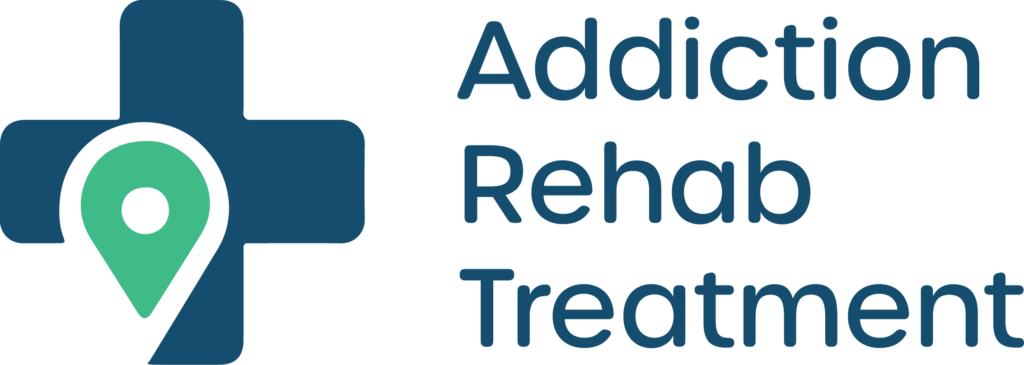
Trauma is something that many people will experience. It’s the result of a stressful event or ongoing situation that threatens someone’s sense of security – creating a sense of helplessness for the individual. Emotional and psychological trauma can result in long-term effects like disturbing memories, substance abuse, panic attacks, anxiety, and more. It could also make people feel disconnected, detached, numb, and cautious of those around them.
Traumatic experiences vary hugely and something that could be extremely traumatic for one person could be a mere inconvenience for the other. Often, a traumatic event involves some sort of threat to safety or life, but it could also be an event that leaves someone feeling isolated, threatened, or overwhelmed.
At the end of the day, trauma isn’t defined by the objective circumstance of the event, but rather it’s the subjective emotional experience of the individual experiencing the event. The more the event makes someone feel threatened, frightened, helpless, or emotional, the more likely it is that they will experience symptoms of trauma down the line.
We’re going to look at the things that can cause trauma, as well as the most common signs and symptoms that could indicate that someone is struggling to cope with a traumatic situation.
As mentioned, the extent of a traumatic event is something that is determined by the individual experiencing it. In general, however, emotional and psychological trauma is often caused by:
Many people will experience overwhelming emotional and physical reactions during and immediately after a traumatic event. This is the body’s natural coping mechanism when it encounters a perceived threat.
Most people will find that these reactions grow weaker over the days or weeks that follow the event. Some individuals, however, continue to experience severe psychological trauma that could become worse months after the event occurred.
These reactions could be caused by the severity of the event, how available emotional support is, past and present stressors and triggers, personality types, and different coping mechanisms. How we react to trauma is entirely down to the individual; there is no right or wrong way to feel after a traumatic event and people should never be judged on how they react to the experience.
There are no normal reactions to abnormal events, and every person could experience a wide range of physical and emotional responses from their trauma.
That being said, these are just some of the most common symptoms that people experiencing psychological trauma present:
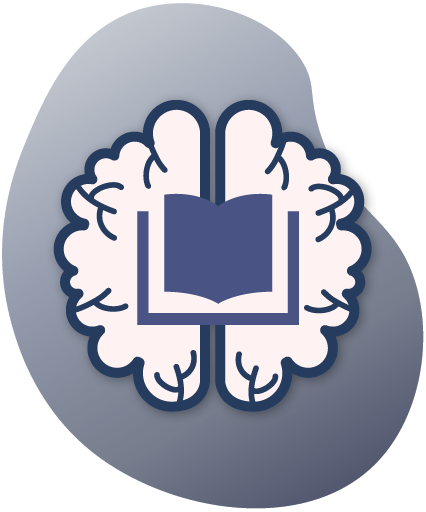
The most common cognitive effects shown by people suffering from trauma include:
People that are having problems after a traumatic event will usually exhibit the following behavioural changes:
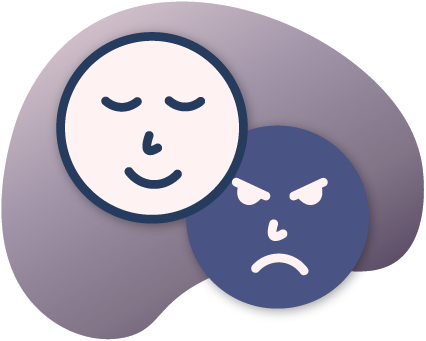
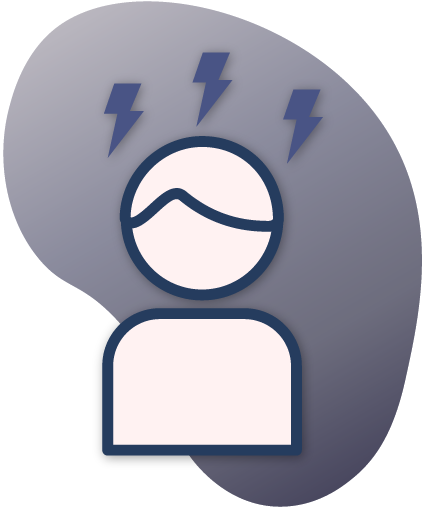
These are the physical symptoms commonly presented by those suffering from trauma:
People that are suffering from trauma often have the following psychological symptoms:
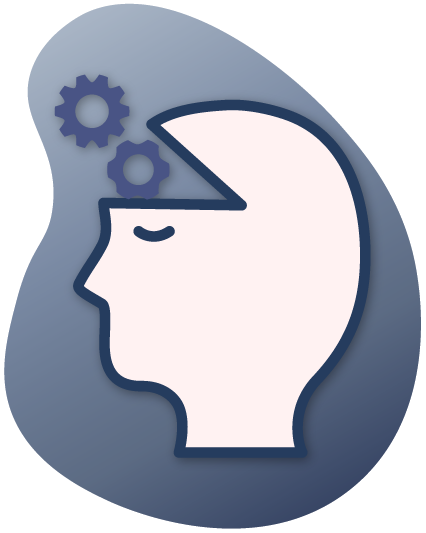
Trauma symptoms are mostly experienced for just a few days to a few months and will gradually fade as the event is processed. Of course, it’s still possible to feel the effects of trauma down the line on anniversaries or when something reminds the person about the event.
Suppose trauma systems continue to overwhelm a person or become worse over time, and they are struggling to move on with their everyday lives. In that case, the person could be experiencing Post-Traumatic Stress Disorder (PTSD).
When trauma results in PTSD, it inhibits the natural way that the body and mind process a traumatic event and causes the nervous system to become “stuck.” Surviving a traumatic event, even if it doesn’t involve death, creates a temporary loss of safety.
Our natural reaction to loss is grief, and those that have been through a traumatic event will have to go through the grieving process in order to heal from the trauma and move on.
Whether it’s been a few days, a few weeks, or a couple of months, there are some things that people can do to help themselves heal from trauma and lessen the effect that they are having on their everyday lives. Here are just some activities that can help people recover from trauma:
Trauma recovery has not got a definitive timeline, and everyone heals at their own pace. However, if months have gone by since the traumatic event and symptoms are still present, or even getting worse, then it’s time to get in touch with a trauma expert for professional help.
Processing and healing from trauma can be a painful, scary, and uncomfortable process, so it’s important that it is done with the help of an experienced professional. A trauma expert will know exactly how to slowly move through the process and use various methods to help their patient heal according to what suits the individual best.
Source:
https://addictionrehabtreatment.com/mental-health/trauma/signs-and-symptoms-of-trauma/
Are you considering pursuing justice through the legal system but don’t know where to begin? You’re not alone. The legal justice system can be confusing and difficult to navigate. But there are services available that can help you by providing free, independent legal advice. Sometimes you just need to talk to a professional and know your options before going forward. Our Legal Aid section provides individually sourced legal services and specialized programs for survivors of domestic abuse, sexual assault, and other forms of violence. These services are available remotely or in-person based on region. If you have any questions, we encourage you to visit the websites provided to learn more.
The Sexual Harassment and Assault Resource Exchange (SHARE) is a legal service offered by the Human Rights Legal Support Centre and provides free, confidential legal advice about legal and non-legal options to all Ontario workers experiencing workplace sexual harassment, workplace-related sexual assault, and gender-based harassment in the workplace to help them make informed decisions about addressing experiences of sexual harassment in the workplace.
SHARE helps workers with:
SHARE legal services are available to all workers in Ontario regardless of age, immigration status, and income.
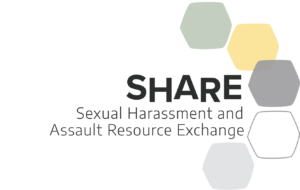
Do you know of any free legal services for survivors of gender-based violence? Let us know.
Legal Disclaimer:
Our website provides general information that is intended, but not guaranteed, to be correct and up-to-date. The information is not presented as a source of legal advice. You should not rely, for legal advice, on statements or representations made within the website or by any externally referenced Internet sites. If you need legal advice upon which you intend to rely in the course of your legal affairs, consult a competent, independent attorney. Vesta Social Innovation Technologies does not assume any responsibility for actions or non-actions taken by people who have visited this site, and no one shall be entitled to a claim for detrimental reliance on any information provided or expressed.
This blog was written by Flora Vineberg of SpringLaw – a Canadian virtual law firm that advises on workplace legal issues. Visit their website at springlaw.ca to learn more about their firm and resources available, including their award-winning blog.

During Part 1 of this blog, we outlined three initial legal options for survivors of sexual assault and/or harassment in the workplace context. These included filing a workplace complaint, filing a grievance if you are in a unionized setting, or submitting an application to the Human Rights Tribunal of Ontario (HRTO). Here, we continue to outline the remaining three options for legal redress in this context.
Per Ontario’s Occupational Health and Safety Act, your employer is responsible for ensuring a safe, harassment-free work environment. If you resign from your employment you typically will not be entitled to any compensation from your employer. If you are terminated, you will typically be entitled to notice of termination – colloquially known as a “severance package”. However, the law has carved out an exception in circumstances where the employer’s conduct has been so bad that you essentially have no choice but to quit. This is called a “constructive dismissal.” Depending on the facts of each case, asserting a successful constructive dismissal claim could result in a damages (compensation) award comparable to what you would have been entitled to had you been terminated. If your constructive dismissal arose out of the context of being sexually harassed or assaulted at work, you may also be entitled to additional forms of compensation including human rights or general damages.
If you experience sexual assault or harassment at work, you may have the option to sue your abuser (individually) as well as your employer in some circumstances. The extent to which a lawsuit makes sense will depend on a variety of factors, and these cases can often be quite complex and time-consuming. In Ontario, there is no statute of limitations for suing someone based on sexual assault and/or assault in the context of a power differential. If you are considering filing a lawsuit, please get in touch with us first for more information.
As a survivor of sexual harassment or assault, you always retain the right to report your allegations to the police; there is no contract, release, or agreement that takes way this right. In Ontario, there is no statute of limitations for making a report to the police. Going through the criminal process can be extremely difficult, and potentially re-traumatizing. If you have any questions regarding reporting to police and/or implications this may have on your employment, please contact us for more information.
Your employer should have Anti-Violence, Anti-Harassment and Anti-Discrimination Policies regulating conduct in your workplace. These are meant to promote and ensure a safe work environment. If you experience sexual harassment or sexual assault at work, please contact us to discuss your various legal options.
If you are an employer and would like guidance or additional information on conducting trauma-informed workplace investigations, please get in touch.
Written by: Flora Vineberg

This blog was written by Flora Vineberg of SpringLaw – a Canadian virtual law firm that advises on workplace legal issues. Visit their website at springlaw.ca to learn more about their firm and resources available, including their award-winning blog.

In the wake of the #MeToo era, a burgeoning consciousness has grown around the existence of and need to address sexual harassment and sexual assault in the workplace. Individuals of all genders and orientations have found the courage to come forward, and legislation in Ontario has made it mandatory for employers to sufficiently investigate these allegations in a timely and comprehensive manner. Trauma-informed Workplace Investigations inherently require a sound understanding of power dynamics and nuanced forms of sexual harassment. New hybrid work models pose unique obstacles for enforcing cyber-bullying and anti-discrimination/harassment policies, and have brought to the forefront the importance of building a workforce predicated on respect, plurality, accountability, legal compliance, and employee well-being. As part of this, employees who experience sexual assault and/or harassment in the workplace may have different legal options at their disposal.
In Part 1, we begin here with a review of three possible options.
While employers are obligated to investigate all allegations they knew or ought to have known about – negating the requirement that a formal complaint be made in order for an investigation to be required – there is often a benefit to making a formal complaint to your HR department and/or through the appropriate channels. The steps to make a complaint should have been outlined to you as part of your on-boarding and training process. Often these are contained in a Respect in the Workplace or Anti-Harassment Policy. Filing a formal complaint keeps a documented track record of behaviour, and allows your employer to take steps towards addressing the issues as soon as practicable, in the form of a workplace investigation. This process aims to preserve confidentiality as much as possible and, depending on the nature and complexity of the allegations, should aim to be wrapped up within a 90-day period. If your allegations involve the person(s) to whom you report workplace-related concerns, it is important to inquire about other avenues for reporting and making your employer aware.
If you feel your safety is at imminent risk, making this known to your employer becomes all the more critical. For employers interested in conducting trauma-informed workplace investigations, please see our free webinar on this topic here.
If you work in a unionized environment, your collective agreement likely contains a clause or provision addressing discrimination and harassment, and outlines the appropriate grievance procedure that may encompass both alternative dispute resolution (“ADR”) as well as other arbitration options. Your Union Representative or Steward is a good resource to discuss options available for filing a grievance related to sexual assault or harassment at work.
The Ontario Human Rights Code bans discrimination based on certain enumerated prohibited grounds, such as sex, sexual harassment, gender identity and expression, for example. The Code also prohibits ‘sexual solicitation’ (seeking a sexual or romantic relationship in exchange for something) while at work or in the process of accessing certain services. If you experience sexual assault, harassment or solicitation at work, you have one year from the time of the event to file an Application to the Human Rights Tribunal of Ontario (“HRTO”), seeking compensation which may include lost wages, general, or human rights damages. The Tribunal can also award other remedial measures to prevent future harassment or abuse, including additional training and revisions to applicable workplace policies.
We have addressed three options for pursuing legal redress if you have experienced sexual assault and/or harassment in the workplace. As each option has pros and cons, it is important to seek legal advice prior to determining which may best serve your interests and needs. The help of informed legal counsel can offer additional insight into the processes and procedures required for pursuing legal recourse, and assist you in navigating these channels. Please contact us here for more information.
For Part 2 of this blog, we will continue to explore three additional options for survivors, as well as responsibilities and things to be aware of for employers.
Written by: Flora Vineberg
